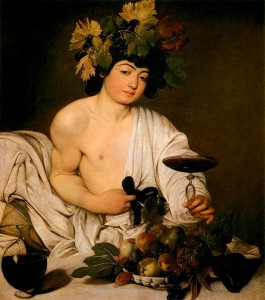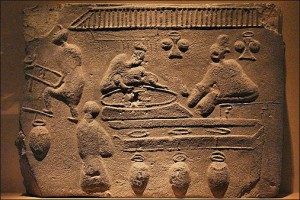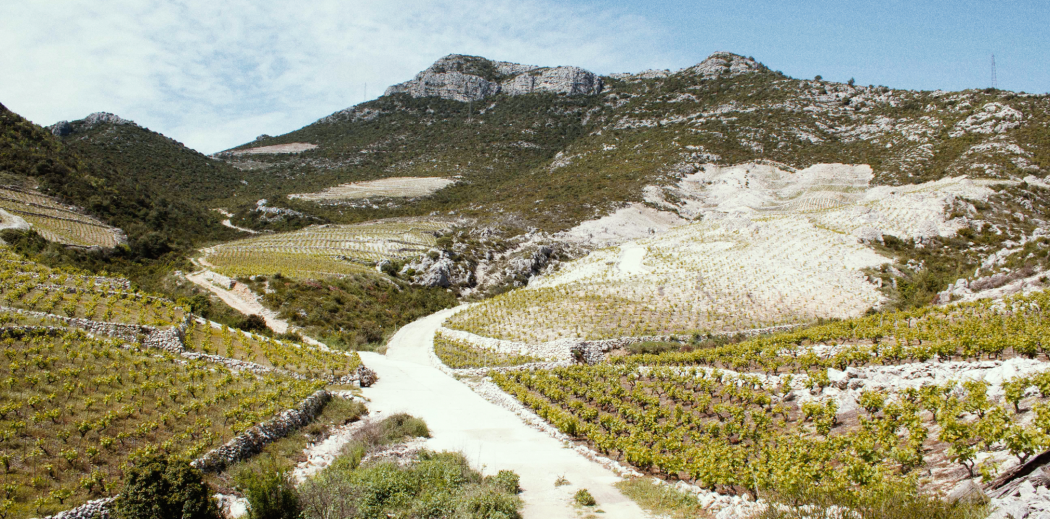There are winemakers around the world who will stop at nothing to link their wines to “the classics.” In Chile you’ll hear all about how the Carménère is really from Bordeaux. In Argentina you’ll be reminded that the Pinot is from Burgundy and the Malbec from Cahors. Vintners in California will take pains to inform you that Zinfandel is a cousin of Primitivo, an Italian grape. Any time those in the wine world look for authority, quality and authenticity they invariably look towards Western Europe- the Old World.
Take a walk through any museum with more than four or five renaissance paintings and you’ll see your fair share of deep red wine. In vivid oil there’ll be carafes on tables overflowing with treasures, bottles being exchanged by ambassadors and crystal glasses painted into the hands of kings and queens.
Read romantic English poetry and literature and watch wine pour out of the pages. John Keats’ request for a fine and sophisticated life was simply, “Give me books, French wine, fruit, fine weather and a little music played out of doors by somebody I do not know.”

Bacchus, by Caravaggio
You really don’t have to read Keats or be a member of the Met to know that winemaking is viewed as a Western institution, and a proud one. Wine is one of the biggest feathers in the West’s bedazzled cap, but evidence suggests that it wasn’t “invented” in Italy, Spain or France. In fact, to find the origins of mankind’s favorite beverage, scientists and researchers say we’ve got to look much farther east.
“For some time, the French proposed, and we all believed, that their varieties were the ‘noble’ varieties.” Stetson Robbins says.
Stetson is an Eastern wine geek extraordinaire and the Sales Manager at Blue Danube Wine, an importer that brings nothing but Eastern European bottles to the USA. He’s talking about grape genealogy, which means it’s a typical afternoon.
“They proposed that French grapes were kind of like the king grapes, and everything sort of disseminated from there,” he continues, “but this was prior to being able to test the genetics of grapes. Grape genetics has had a big impact on our understanding of how wine has evolved, and modern archaeological evidence suggests that the earliest fermented beverages that contained grapes were made in China and the Fertile Crescent.”

Is China the birthplace of wine?
If you’ve ever purchased a bottle of vino at a bodega you’ll know that ‘fermented beverages that contained grapes’ and ‘wine’ are two very different things. Humans fermented all sorts of stuff in all sorts of places millennia ago, but not much of it was actually wine.
“Before pure grape wine arrived on the scene,” Stetson points out, “we were making, like, ancient Pruno. Our alcoholic beverages were a lot closer to prison wine where you’re saving your bread and oranges and collecting sugar packets, whatever you can to ferment something that will intoxicate you and your friends. It was probably pretty foul.”
Understandably, academics aren’t too concerned with finding archaeological traces of the first batches of Pruno. To find the so-called cradle of vinification, it makes the most sense to look for the earliest evidence of domesticated grapevines, to locate the first sites where humans attempted to make real grape wine on purpose.
As it turns out, that magical place where mankind left prison wine behind (until modern prisons were built) lies somewhere between Georgia and Armenia, right on the cusp of Eastern Europe and Asia. The Georgians and Armenians are still arguing over the bragging rights, but one thing is clear: wine is a product of the East.
Though it may be true that when we think of wine we automatically think of France, it’s also true that the birthplace of the beverage is at least 2,000 miles from the hallowed terroir of Bordeaux. Slowly but steadily, wine and wine culture spread from Asia and Eastern Europe to the West, the countries that claimed to be wine’s motherlands. These discoveries won’t knock the classics off of their pedestals, but they do change the way we see the wine world and how wine culture spread across it.
In Stetson’s words, “our picture or idea of how wine developed is very different than how it actually did. Wine came not from the West,” he smiles, “it came from the East.”









Greece
i ENJOYED THE ARTICLE BUT AM CONFUSED AS I HAD ALSO READ AN ARTICLE A COUPLE OF YEARS AGO THAT WINE PRODUCTION ACTUALLY BEGAN IN THE IRAQ (PERSIA AT THE TIME) AREA. SO WHICH IS CORRECT?
There’s lots of evidence that people made alcoholic beverages containing grapes long before pure grape wine was around- this includes parts of Asia and Eurasia (modern day Iran). There’s also still debate amongst archaeologists but consensus is moving towards areas in Georgia and Armenia, where signs of the first cultivated grape vines and viticulture oriented towards the production of pure grape wine (not just a hodgepodge of ingredients including grapes) exist. It can be difficult to find conclusive answers because authors don’t often distinguish between primitive alcoholic concoctions that happen to have grapes in them and actual grape wine, closer to what we consume today.
Thank you, Hayes, I suppose when this subject is brought up, there is much clarification which has to be communicated as to just what “first” they are talking about. (and yes, Iran not Persia!). I see you come from a state where there are today many fine wines coming from, the Finger Lakes, where we have been going for the last 24 years (from MA).
Yes, it’s a subject with lots of different debates and has not yet been “settled” by any means as far as an exact location goes- but it’s interesting to think that at the very least wine isn’t a product of Western Europe, which is the assumption of many drinkers who are used to thinking about French, Spanish and Italian wines as the “originals.”
To your point about New York, it is definitely an increasingly great state for wine drinkers- in addition to the FLX we’re also lucky to have some great winemakers out on the North Fork in Long Island. Cheers and thanks for reading!
My wife and I often have “discussions ” with some friends who are advocates of North Fork wines. We are bias toward Finger Lakes. Some Long Island wineries get their grapes from the Finger Lakes but I don’t suppose any Finger Lake wineries buy Long Island grapes. I am glad I found your blog. We also favor Italian wines (whereas our friends prefer French wines – – how do we manage to stay friend!?)
Wine is mentioned in the Old Testament, and was used as a dedicated to God in the Temple offerings.
So it was in biblical Israel, Judea and Sumeria that wine was cultivated and used.
.
What’s your point Glenda? Wine was also mentioned then used at my dinner last night.